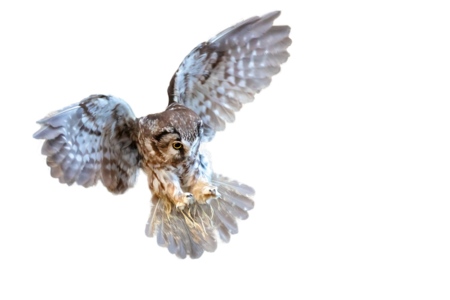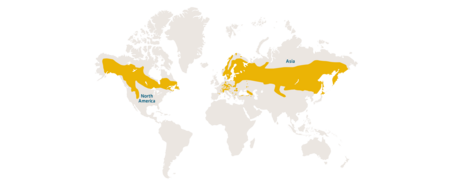Boreal owl
Aegolius funereus
![[Translate to English:] [Translate to English:]](/fileadmin/_processed_/b/1/csm_raufusskauz-tierpark-hellabrunn-welt-der-voegel_19b0560290.jpg)
- FamilyTrue owls (Strigidae)
- Weight90 – 210 g
- Habitatmixed and coniferous forests in mountainous regions
Lack of nest cavities
The boreal owl with the size of a blackbird typically nests in abandoned black woodpecker cavities. Like many owls, it also uses these to cache food. Due to past forestry management, mixed forests have been converted into coniferous forests. However, woodpeckers have not chiselled out tree cavities here. Nesting aids have therefore been installed to support the boreal owl.

A life determined by prey
The boreal owl feeds mainly on small mammals such as bank and meadow voles, and occasionally smaller birds. These owls usually form serial monog mous relationships where a male and female stay together for an entire breeding season, after which the female often moves on. However, if food is plet ful, a male will mate with up to three females in one season.
The boreal owl is called “Raufußkauz” in German. “Rau” is an obsolete term for “fur”, referring to its heavily feathered feet.
Distribution
